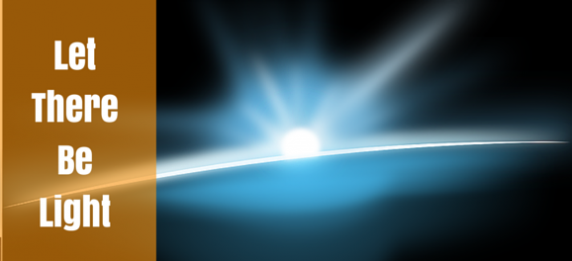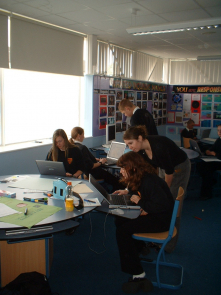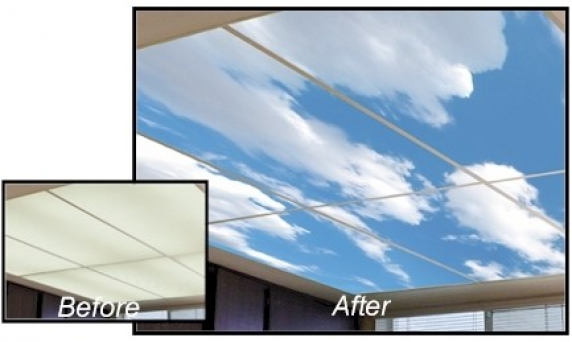Let There Be Light!
by Barbara Prashnig
20.06.2016

The importance of light levels in learning environments
It has been well documented what impact light has on human beings, on their ability to concentrate and overall well-being, not only in learning or work situations, but in everyday life as well. For a closer investigation it is important to distinguish between the different properties of natural and artificial light.
The need for light in human beings seems to be very personal, depending on preferences for bright or dim light and all levels in between as can be seen in our LSA Profiles (Learning Style Analysis).
Light levels stimulate brain activity in different ways and often generate physical reactions, whereas colours have an impact on human emotions, trigger feelings and undoubtedly have spatial effects in rooms. When light levels are ‘wrong’ for students, they will switch off, lose concentration, can suffer from headaches, become agitated, often causing discipline problems, and in the worst case give up on academic learning.


It is not possible to go into great depths in these areas within the confines of this blog but the main aspects are described here. For further reading please visit the websites below where much of the information was derived from.
Daylight/natural light vs. fluorescent/artificial lighting
Current research confirms that we are energized by full-spectrum light of the sun.
Natural light helps pupils learn better as a new study from Sacramento, California found. It was one of the largest ever done on natural light in schools, and findings suggest that children learn faster and do better on standardized tests in classrooms with more daylight.
As researchers isolate the specific part of the sun's spectrum that is related to health and well-being, we could eventually create the perfect indoor environment with artificial lighting, until then it's Vita-Lite. Based on extensive research, the cool-white fluorescent bulb is legally banned in German hospitals and medical facilities. Yet, most offices, shops, hospitals, and schools in NZ and Australia still use cool-white fluorescent light.
Full or incomplete spectrum lighting?
In 1980, Dr. Fritz Hollwich conducted a study comparing the effects of sitting under strong artificial cool-white (non-full spectrum) illumination versus the effects of sitting under strong artificial illumination that simulates sunlight (full-spectrum). Using changes in the endocrine system to evaluate these effects, he found stress like levels of cortisol (a stress hormone) in individuals when sitting under the cool-white tubes. These changes were totally absent in the individuals sitting under the sunlight-simulating tubes.
The only natural full spectrum fluorescent light bulbs and tubes illuminating details and colour with the same accuracy as natural outdoor daylight are known in Germany as BIO Light – see their English website www.narva-bel.de and is marketed in the US as Vita-Lite www.naturallighting.com Both manufacturers produce full spectrum, full colour, natural light tubes, portraying true colours which can reduce fatigue, glare and eye strain from VDT Screens. This fluorescent lighting is pleasant, natural, bright, and stimulating. It can also reduce SAD (Seasonal Affective Disorder, also known as the ‘winter blues’) and is excellent for ADHD (Attention Deficit Hyperactivity Disorder) in students.
Practical Tips:
If you have old, cool-light fluorescent tubes in your class, check out the learning styles of your students first: with the LSA instruments for primary school pupils (see LSA-Mini) and high school students (see LSA-Swift) teachers can find out who needs bright light and how many students have a preference for dim light.
Parents can do the same for their children by looking at the Parent Version (LSA-Junior) of our LSA Profiles.
Make sure that there is always a low-light corner or naturally darker area in your classroom and diffuse harsh fluorescent light with loose, transparent fabric. If your budget and the light fixtures allow it, light diffusing panels can be attached, replacing the white plastic panels which do not diffuse the cold glare.
Please visit this interesting website www.skyscapes.biz and have a look at their very creative products. SKY-SCAPES® are durable lightweight panels as replacement light diffusers and easy to install in just minutes per fixture. They have various transparent images like blue sky with white clouds or green flowering plants which give the impression that the light segments in the ceiling are actually windows.

A stretch of blue sky is encompassed by puffy white clouds. These cloud designs were photographed on the same day, thus the cloud sizes, densities, and sky colour are consistent. If you want to install multiple panels in the same room, with ceiling tiles between them, you can choose a combination of these Cloud panels.
Your feedback is important to us
What do you think about this blog article? We look forward to your feedback and welcome your ideas.

About Barbara Prashnig
Professor Barbara Prashnig, a pioneer und visionary in the field of style diversity in leaning and working as well as professional development. Her passion is to help people in difficult situations succeeding through better self knowledge. She is the Founding Director and CEO of Creative Learning Systems in Auckland, New Zealand.
